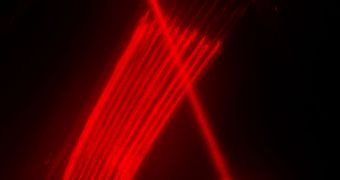The old radio waves' supremacy in the communication technology field is drawing to its end, as the newly-discovered replacing technology offers increased speed and security via light.
The threat to the radio wave communication comes from using visible light. Researchers from Boston University's College of Engineering (BU) have developed a (“smart lighting”) method of ensuring communication by means of low-power light emitted from LEDs (light emitting diodes) which are switched on and off so quickly that the human eye cannot perceive the action. BU Engineering Professor Thomas Little is involved in the National Science Foundation's $18.5 million “Smart Lighting Engineering Research Center” project, which was granted to Boston University, Rensselaer Polytechnic Institute and to the University of New Mexico (UNM) in order for them to help with the development of the optical communication system and technology, making the light of a LED the equivalent of a WiFi access point.
Prof. Little explains, “Imagine if your computer, iPhone, TV, radio and thermostat could all communicate with you when you walked in a room just by flipping the wall light switch and without the usual cluster of wires. This could be done with a LED-based communications network that also provides light - all over existing power lines with low power consumption, high reliability and no electromagnetic interference. Ultimately, the system is expected to be applicable from existing illumination devices, like swapping light bulbs for LEDs. As we switch from incandescent and compact florescent lighting to LEDs in the coming years, we can simultaneously build a faster and more secure communications infrastructure at a modest cost along with new and unexpected applications”.
Based on the emerging technology, there are already plans for wide light communication networks, computer applications (like providing Internet directly), remote controlling, telephone connectivity and many others. But, as Little envisions, the LED technology may not be limited to indoor applications, instead, it could be used on an even larger scale - outdoors. “This technology has many implications for automobile safety,” he shares. “Brake lights already use LEDs, so it's not a stretch to outfit an automobile with a sensor that detects the brake lights of the car in front of it and either alerts an inattentive driver or actively slows the car.”

 14 DAY TRIAL //
14 DAY TRIAL //